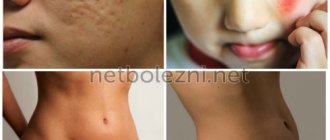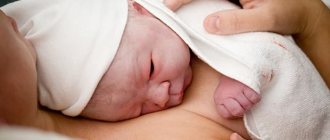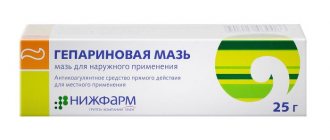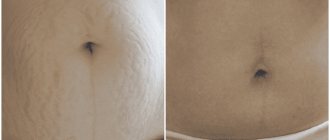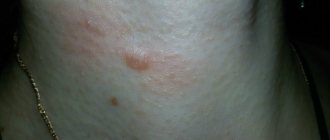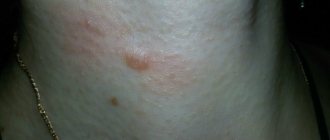Surgical intervention involving skin incisions does not pass without leaving a trace. Scars remain on the surface of the body. Some of them are small and unnoticeable, while others are large, bright, protruding above the surface of the skin.
It is completely impossible to remove scars after surgery, but it is quite possible to make them miniature and light. Modern cosmetology procedures will help with this.
Types of scars
Postoperative scars are a consequence of intensive growth of connective tissue in the area of skin damage. They can have different shades, sizes and shapes. The following types of scars after surgery are distinguished:
- Normotrophic. Does not protrude above the surface of the epidermis and does not differ from the skin in color.
- Atrophic. It looks like a small depression. Appears when there is insufficient amount of collagen.
- Hypertrophic. Protrudes above the surface of the skin and has a pink tint.
- Keloid. It has the shape of an elevation and a bluish tint. The skin in the affected area is tight, dry, and may peel. Often the patient is bothered by itching. Over time, keloid scars increase in size.
Scar removal after surgery is an optional procedure. If the scar is small, pale and located on an area of the body that can be easily hidden with clothing, you can refuse the procedure. If the scar causes discomfort and is noticeable to others, it is better not to wait, but to immediately contact a surgeon or cosmetologist.
Chemical peeling
Peeling is the destruction of scar tissue due to the action of various organic acids. They also help optimize fat metabolism, which can also help get rid of acne. There are several types of chemical peeling (depending on the reagent used):
- TCA peeling (using 3-chloroacetic acid with a concentration of 35-50%).
- Retinoic (based on retinoic acid, which not only destroys scars, but also has an antibacterial effect).
- Phenolic (phenol-based - it also helps get rid of scars and destroys bacteria). However, phenol is toxic and can have a bad effect on the nervous system.
Chemical peeling is contraindicated in the following cases:
- recurrence of acne;
- tendency to keloid scars;
- wounds, neoplasms;
- individual intolerance to the substances used.
Scars after surgery: what to do at home
A conservative approach is appropriate for small, fresh scars. In complex cases, treatment of scars after surgery involves the use of cosmetic procedures or surgical excision if other methods have not led to a positive result.
At home, you can use drugs with different pharmacological effects:
- accelerating regeneration;
- improving blood circulation;
- immunomodulatory.
It is possible to use ointments and gels containing enzymes to inhibit the rapid growth of new tissue or stimulate the synthesis of your own collagen. It is important to remember that scar correction after surgery is a long process. The drugs must be used for several months.
Laser resurfacing
Laser radiation affects the surface layer of the skin and destroys the tissue that forms the scar. As a result, dead cells are removed and the restoration of healthy tissue is activated. Today, 2 laser therapy methods are used:
- Carbon dioxide laser, based on carbon dioxide, helps remove scars and lighten the affected area.
- The Fracel laser softens scar tissue and enhances collagen synthesis.
The procedure has proven its effectiveness. However, in a number of cases its implementation is contraindicated:
- formation of rough scars (keloid);
- blood clotting problems;
- diabetes;
- mental pathologies;
- exacerbation of chronic diseases;
- all stages of pregnancy and lactation;
- tumors (including benign ones).
How to remove scars after surgery: modern cosmetic procedures
If there is a large scar left on the body after surgery, it is better to remove it using cosmetic procedures. Modern methods are safe and effective. There are several options for eliminating scars after surgery:
- Filling with collagen. A method recommended only for atrophic scars. It involves filling the depression with collagen and leveling the surface. The effect lasts for 12 months.
- Cryodestruction. The method involves treating the scar with liquid nitrogen. Damaged tissue is frozen and destroyed, and healthy skin grows in its place. The disadvantage of the method is pain, requiring anesthesia.
- Microwave therapy. The epidermis is exposed to electromagnetic waves, which allows you to achieve lasting results. In some cases, additional cryodestruction is required.
- Microdermabrasion. The surface of the epidermis is polished using chemical compounds - acids, powdered aluminum oxide. The downside is the ability to work only with small superficial scars.
- Dermabrasion. Another grinding option involves the use of special brushes. When carried out correctly, the procedure is safe, but violation of the technique can lead to the formation of new scars.
- Bukki-irradiation. The skin is treated with ultra-soft x-rays, which initiate the reverse development of the scar. The method is used for keloid and hypertrophic scars, but is prohibited in case of circulatory problems.
- Laser irradiation. The most common method recommended by doctors who tell how to get rid of scars after surgery. The method is suitable for different types of skin changes. Laser scar resurfacing is a quick procedure that is performed under local anesthesia.
Surgical intervention
In rare cases, when a scar causes significant discomfort, and a course of laser scar removal after surgery did not help, plastic surgery methods are resorted to. During the manipulation, the doctor excises the damaged tissue and transplants a skin flap of the patient taken from another area. The entire process takes about an hour and is performed under general anesthesia. Next begins the rehabilitation period, which may take several months.
Difficult decoration
Scars spoil the appearance, become a source of psychological discomfort, and if we are talking about surgical scars - the “epilogue” of surgical interventions - then they can disrupt the functions of organs and tissues. Cosmetology, dermatology and plastic surgery jointly deal with scar issues.
Scar is connective tissue
, which is formed at the site of a violation of the integrity of the skin (due to mechanical trauma, burns, surgery, various dermatoses, etc.), accompanied by inflammation. It does not have a skin pattern and looks unnatural against the general background of the skin.
Of course, not every injury leaves a scar. Damage to the skin up to the papillary dermis
, as a rule, heals without a trace. And even if the skin is injured at the level of the papillae, under certain conditions it can heal without scars.
More information on the topic of endometriosis:
Endometriosis, Author's treatment methods, Laparoscopy for external endometriosis, Drug treatment of endometriosis, Endometriosis and pregnancy, Intestinal endometriosis - treatment and surgery, Retrocervical endometriosis, Laparoscopic surgery for retrocervical endometriosis, What is the danger of endometriosis, Endometriosis stage 4, Endometriosis and infertility, What are the pains with endometriosis in women?, Endometriosis of the bladder and ureter, Symptoms of endometriosis in women, Endometriosis of the ovary, Endometriosis of the rectum
Types of suture materials and suturing methods in modern medicine
An ideal suture material should have the following characteristics:
Be smooth and glide without causing additional damage. Be elastic, stretchable, without causing compression and tissue necrosis. Be durable and withstand loads. Tie securely in knots. Be biocompatible with body tissues, inert (do not cause tissue irritation), and have low allergenicity. The material should not swell from moisture. The period of destruction (biodegradation) of absorbable materials must coincide with the time of wound healing.
Different suture materials have different qualities. Some of them are advantages, others are disadvantages of the material. For example, smooth threads will be difficult to tighten into a strong knot, and the use of natural materials, so valued in other areas, is often associated with an increased risk of developing infection or allergies. Therefore, the search for the ideal material continues, and so far there are at least 30 thread options, the choice of which depends on specific needs.
Suture materials are divided into synthetic and natural, absorbable and non-absorbable. In addition, materials are manufactured consisting of one thread or several: monofilament or multifilament, twisted, braided, having various coatings.
Non-absorbable materials:
Natural – silk, cotton. Silk is a relatively durable material, thanks to its plasticity it ensures the reliability of knots. Silk is a conditionally non-absorbable material: over time, its strength decreases, and after about a year the material is absorbed. In addition, silk threads cause a pronounced immune response and can serve as a reservoir of infection in the wound. Cotton has low strength and is also capable of causing intense inflammatory reactions. Stainless steel threads are durable and produce minimal inflammatory reactions. Used in abdominal surgeries, when suturing the sternum and tendons. Synthetic non-absorbable materials have the best characteristics. They are more durable and their use causes minimal inflammation. Such threads are used for matching soft tissues, in cardiac and neurosurgery, and ophthalmology.
Absorbable materials:
Natural catgut. The disadvantages of the material include a pronounced tissue reaction, the risk of infection, insufficient strength, inconvenience in use, and the inability to predict the timing of resorption. Therefore, the material is currently practically not used. Synthetic absorbable materials. Made from degradable biopolymers. They are divided into mono and polyfilament. Much more reliable compared to catgut. They have certain resorption times, which differ for different materials, are quite durable, do not cause significant tissue reactions, and do not slip in the hands. Not used in neuro and cardiac surgery, ophthalmology, in situations where constant strength of sutures is required (for suturing tendons, coronary vessels).
Suture methods:
Ligature sutures - they are used to ligate vessels to ensure hemostasis. Primary sutures - allow you to compare the edges of the wound for healing by primary intention. Sutures can be continuous or interrupted. According to indications, immersed, purse-string and subcutaneous sutures can be applied. Secondary sutures - this method is used to strengthen primary sutures, to re-close a wound with a large number of granulations, in order to strengthen a wound that heals by secondary intention. Such sutures are called retention sutures and are used to unload the wound and reduce tissue tension. If the primary suture was applied in a continuous manner, interrupted sutures are used for the secondary suture, and vice versa.
How seams are formed
The formation of scar tissue is a natural reaction of the body to damage caused during surgery. Since abdominoplasty is an abdominal operation, it is impossible to avoid damage during surgical work. Tissues injured during the intervention force the body to launch an inflammatory response and begin producing collagen in the damaged areas.
At the moment of intense collagen production, a red, clearly visible mark is formed on the skin, rising above the level of the rest of the skin. Once the destroyed tissue begins to heal, the excess collagen gradually disappears over time. The formation of a new, normal scar begins, which will remain at the site of the incisions. If the abdominoplasty scar left a noticeable one, it means that the scarring process was disrupted for some reason (suppuration, strong tissue tension, hereditary predisposition, etc.).
Prevention and more prevention!
In the initial postoperative period, it is important to do everything to ensure optimal scarring. Treatment of fresh scars must begin before the sutures are removed and complete healing occurs. Physiotherapeutic treatment gives excellent results, and the sooner it was started (no later than the fifth day after suturing), the better and more favorable the outcome will be. Timely physiotherapeutic treatment of fresh scars always significantly accelerates and optimizes the healing process, and, very importantly, significantly reduces the risk of pathological scars, such as hypertrophic and keloid. While later therapeutic treatment of old six-month physiological scars is not a method for correcting postoperative scars and scars, since it does not provide any visible improvements in their condition.
Experts agree that the optimal approach would be the integrated use of physiotherapeutic methods (in the absence of contraindications to physiotherapy). These include magnetic therapy, ultrasound, infrared laser therapy (“laser shower”), microcurrents, phonophoresis, laser exposure in the yellow-green spectrum, local and general lymphatic drainage, pulsating vacuum with a low degree of resolution.
Our clinic is a return to health and beauty
If your life philosophy is built on the principles of health and beauty, then we are on the same path! Our doctors are happy to offer you all their professional experience and skill in order to restore and preserve your health and beauty. We will always professionally and humanly support you in your desire to improve and become better.
Do not turn a blind eye to defects in appearance associated with the formation of scars and scars, do not hush up your experiences. Come to us, and together we will always find the best way out of the current situation. Remember that in any case we will not leave your questions without attention and participation.
Take the first step, call us and sign up for a consultation.
You can trust us, and the reputation of our clinic as an international medical center speaks for itself.
Hard case
Keloid scars sometimes occur without any effect on the skin. Spontaneous keloids
- convex skin growths are therefore spontaneous because they manifest themselves without external causes.
There is a concept of keloid constitution
; By the way, it is relatively common among people of the dark race. In addition, experts talk about keloid zones, which are the most prone to the development of this kind of scars. These are the face, ears, neck, shoulder girdle, upper back and chest.
In cosmetology practice, there are cases when the removal of small defects (say, pinpoint papillomas in the décolleté area) causes the formation of keloids the size of a coin! Taking certain medications, such as isotretinoin, can also cause the formation of keloid scars.
Before undergoing a chemical peel or laser resurfacing, your doctor should ask you about your keloid susceptibility. True, it is very difficult to predict whether a scar will appear at the site of exposure or not. Fabrics can behave unpredictably.
